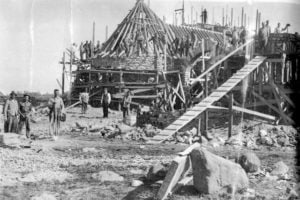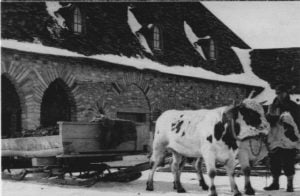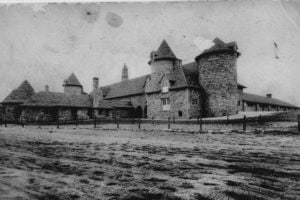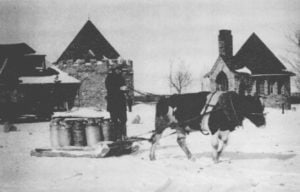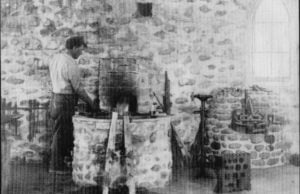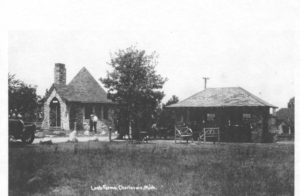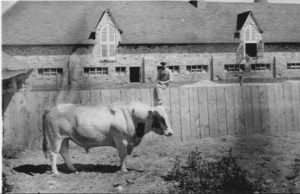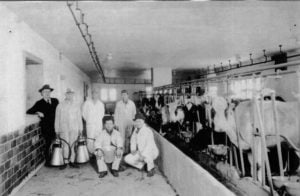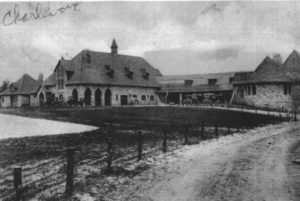Castle Farms is not only a renowned Northern Michigan wedding venue but also a historical tourist attraction with 100 years of history to share, and it all started with a man named Albert Loeb. A wealthy Chicago entrepreneur, Albert Loeb was a self-made man who worked his way through college and over time became a successful Chicago attorney. He then encountered two individuals named Sears and Roebuck, which led him to be a part of the corporate world. By 1917, he held a position in senior management with Sears Roebuck Company and during WWI he was called to serve as acting President of the corporation.
In June 1917, Albert Loeb received good news from his attorney that his bid to purchase a portion of Northern Michigan property was approved. He was now the proud owner of eight hundred acres of lakefront property located near the acclaimed summer resort community of Charlevoix. Shortly after, his property grew to nearly 1800 acres and Mr. Loeb’s vision of a country home and estate on Lake Charlevoix would become a reality. As a successful business man, Albert envisioned a working dairy farm with barns large enough to hold more than two hundred head of dairy cows and equipment to showcase modern technological advances in farming. He picked an area that wasn’t very popular for farming in order to prove that his equipment worked better than anything else.
Albert Loeb had a particular fondness for the architecture of the Renaissance Castles found throughout the French countryside. He found their distinctive Romanesque and Gothic arches, decorative turrets and sweeping galleries to be very appealing. When the time came to draw up the plans for his Charlevoix property, Mr. Loeb chose Arthur Heun, a renowned Chicago architect who also designed the Loeb family home in Kenwood, Illinois. The plans were to be modeled after the stone farms found in Normandy, France.
Work commenced on the Loeb family home, also known as “The Big House” and Loeb Farm in 1917. The engineer for the city of Charlevoix, R.F. Sloan, tendered his resignation with the city in July to take the position of construction manager for the Loeb property. Construction was a painstaking process. Native fieldstone from around the region was transported to the site, where thirty five skilled stone masons and local men labored to bring Heun’s plans to life. Eventually the buildings would include horse stables, a carriage hall, blacksmith shop, ice house, a Farm Managers office, a ‘drive-by’ summer shop which sold dairy products, as well as impressive dairy barns with stanchions for cattle and a dormitory for farm workers who would live onsite. Within two years, the entire construction project was completed and Loeb Farms was up and running!

